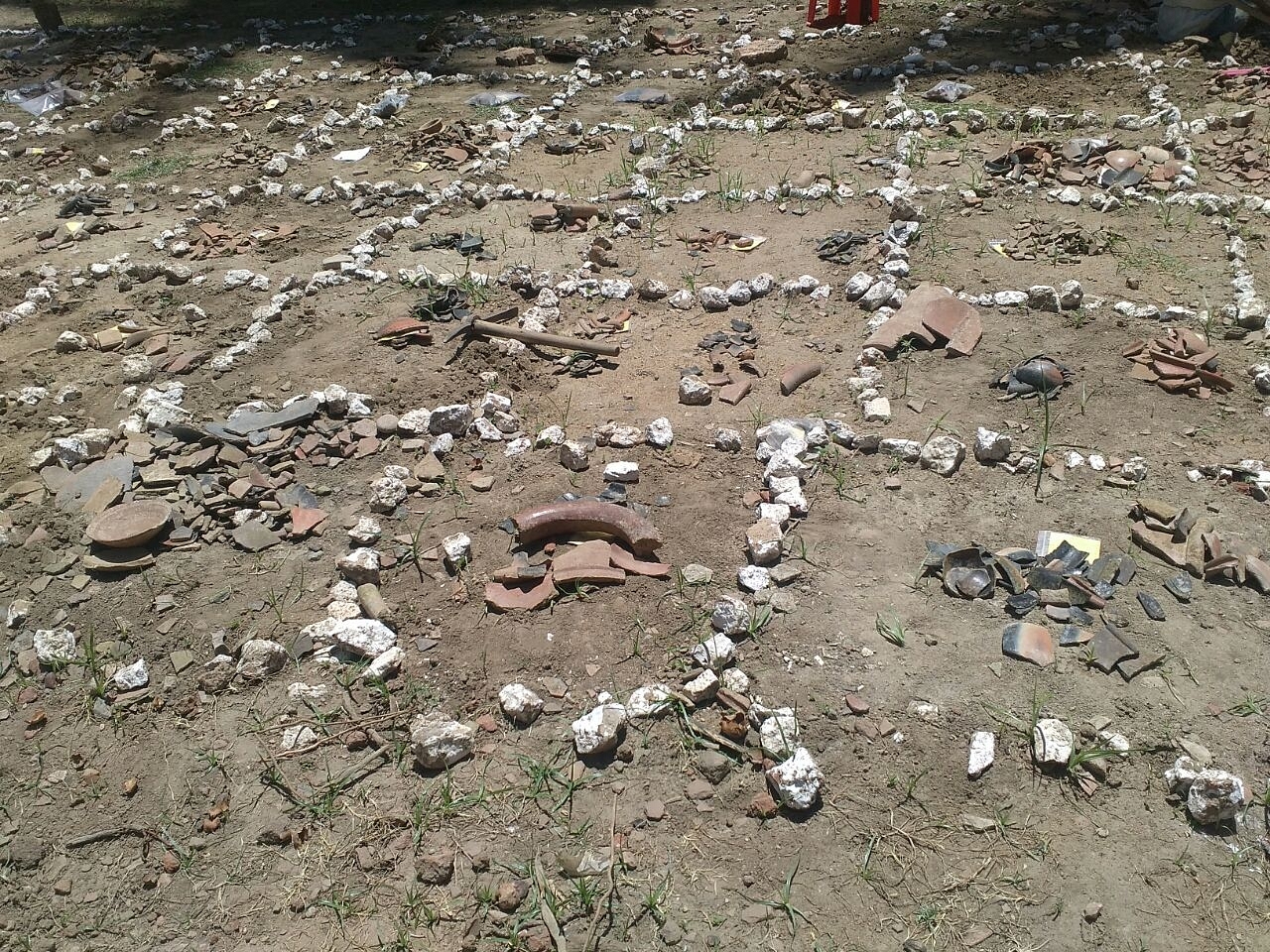Culture
Indus Civilisation Site In Tamil Nadu?The Keeladi Discovery Shouldn’t Fall Prey To False History
- The Archaeological Survey of India (ASI) recently discovered a Harappa-like site in Sivaganga district, Tamil Nadu. This discovery is important for more than one reason, writes Aravindan Neelakandan.

Artefacts from the excavation site.
South India can rightly be considered as the Cinderella of Indian history. While a lot of archaeological excavation and discoveries have been carried out in North India for the last three centuries, comparatively very little has happened in the south.
However, from discoveries of megalithic sites and cave drawings to the occasional unearthing of burial sites and potteries with graffiti, South India has shown a great promise to archaeologists despite no systematic work being conducted here so far.
The Sangam literature (300 BCE to 400 CE) shows a vibrant Tamil life with well laid out towns which are organically related to a colourful village life. Some songs give detailed descriptions of port cities and various settlements. However, there have not been enough archaeological substantiation attempted for the historical data embedded in Sangam literature. Coins have been obtained with the names of some of the rulers.
The news of Keeladi, a village in Sivaganga district in Tamil Nadu, having thrown up large scale urban settlements more than 2000 years old, coinciding with the Sangam age, is good encouragement for Indian archaeology. There have been reports that the urban remains unearthed have similarity to the Harappan civilisation. In fact, the period now suggested coincides with the so-called second urbanisation wave which happened around the same period in the Gangetic plains.
The prevailing notion was that the Harappan civilisation was destroyed or occupied by invading Aryans and subsequently there was a ‘Vedic dark age’. When curtains were lifted, the second urbanisation had started which was not related to Harappan culture. As more and more archaeological sites emerge, the notion of discontinuity gives place to the notion of transformation. For example, DP Agrawal had written in 1971 that after the ‘Aryan invasion’ there was a subsequent discontinuity, and a new Gangetic urban civilisation arose. However, by 2007 Agrawal was listing no less than nine important continuities that archaeology can attest between the Harappan and post-Harappan civilisations.
Colonial Indologists and Marxist historians have always tried to find archaeological evidence for Aryan invasion/migration in the form of discontinuity with the Harappan culture and presence of a new alien non-Harappan material culture. The chosen candidate for this was then Painted Gray Ware (PGW) artefacts.
With Vedic motifs discerned on these potteries, they were seen as the best candidates for the new Aryan culture associated with the ‘second urbanisation’. However, as more and more archaeological sites were revealed these artificially constructed barriers started getting blurred. Archaeologist Jim Shaffer has pointed out that the archaeology shows ‘no cultural discontinuities separating PGW from the indigenous proto-historic [Harappan] culture’.
A case in point is the Alamgirpur site. This Harappan site on the banks of Yamuna, a tributary of Ganges, was discovered by Y.F.Sharma in the 1950s. After a gap of 50 years, the site was opened for excavations and study in 2008. The new excavations by RN.Singh ‘revealed that there is no stratigraphic gap; in fact, it appears that there was an overlap phase of PGW ware and the Harappan’.
Clearly the two-thousand years old site in Tamil Nadu needs to be placed in the same context and continuity between Harappan and the sites belonging to ‘second urbanisation’ wave is to be expected. It is to be viewed in the larger context of pan-Indic phenomenon.
In Indian context there has always been a tension between archaeology and mythical constructs like Aryans. This not limited to colonial Indologists and Marxist historians alone. The Indic side, too, has erred with marine excavations at Dwaraka and allowing themselves to be used by the likes of Graham Hancock.
In Tamil Nadu, this acquires yet another dimension with the claim of direct Harappan-Tamil lineage. This could then cut off archaeology in Tamil Nadu from its Indian context and make it an island as well as a tool in the hands of crack-pot racists. Given all these dimensions the archaeological discovery in Keeladi village needs to be treated with all the seriousness it deserves.
Introducing ElectionsHQ + 50 Ground Reports Project
The 2024 elections might seem easy to guess, but there are some important questions that shouldn't be missed.
Do freebies still sway voters? Do people prioritise infrastructure when voting? How will Punjab vote?
The answers to these questions provide great insights into where we, as a country, are headed in the years to come.
Swarajya is starting a project with an aim to do 50 solid ground stories and a smart commentary service on WhatsApp, a one-of-a-kind. We'd love your support during this election season.
Click below to contribute.
Latest